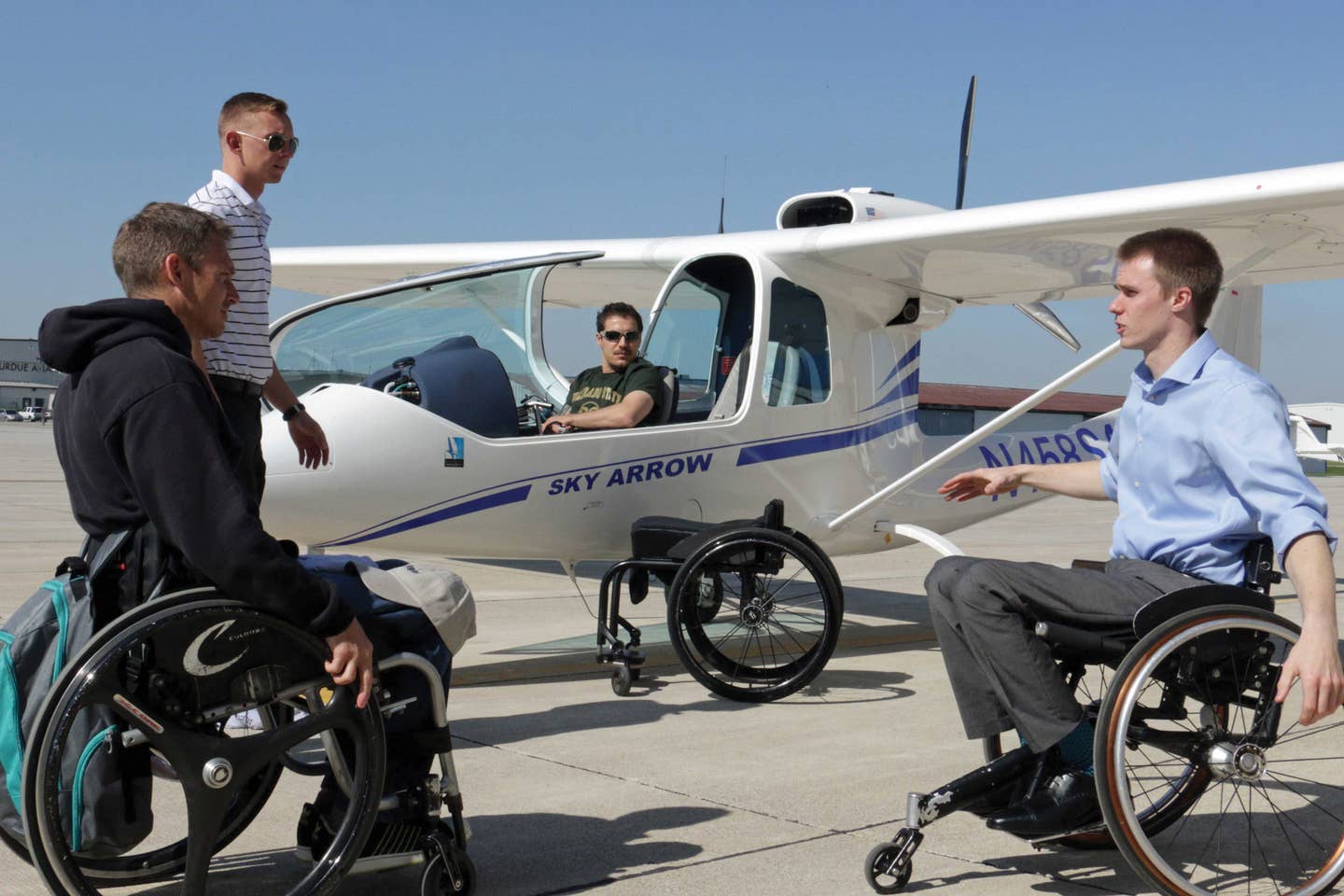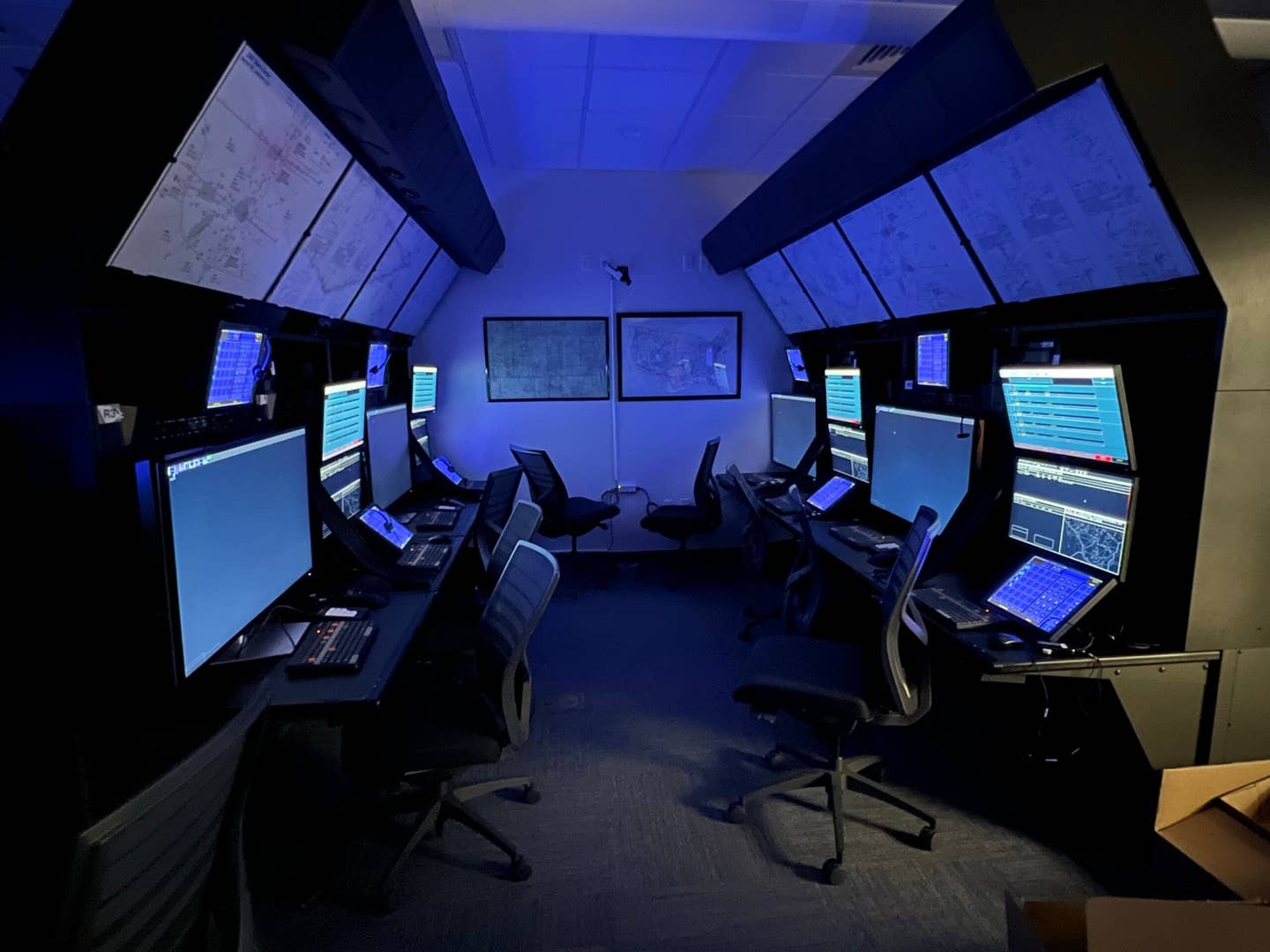
The Sky Arrow LSA can be flown using hand controls in lieu of rudder pedals. Jessica Korff/Fleur de Lea Photography
I have heard it many times: “I have always wanted to learn to fly, but I don’t have perfect vision.” The idea that pilots need 20/20 vision is truly a misconception. And while there are some medical conditions that would disqualify you from becoming a pilot, most can be overcome. Only one eye? No problem. No hearing? No problem. Missing one or several limbs? No problem.
It may surprise you to learn about seemingly insurmountable barriers that certificated pilots have conquered. In some cases, it’s a matter of getting a special medical certificate. For others, a specific type of airplane, or one that has been modified, can help you beat the challenge. Other cases simply require special procedures. Whatever your perceived limitation, don’t give up on your dream—look at all of these options, with more innovations coming along every year.
Overcoming Medical Obstacles
Title 14, Part 67 of the Code of Federal Regulations outlines the medical-certification rules for pilots. It includes a list of conditions that prevent an aviation medical examiner from issuing one of the three levels of medical certificates: first, second and third class. AMEs evaluate such things as hearing, vision, and general physical and mental health. If the AME finds a disqualifying condition, there are two paths around it, says Dr. Graham Gitlin, senior AME in west Los Angeles, California.
If the patient has what’s classified as a “static condition”—a condition that doesn’t change, such as a missing body part, partial paralysis or hearing loss—they can apply for a Statement of Demonstrated Ability (SODA) with an FAA regional flight surgeon or the Aerospace Medical Certification Division.
The SODA is a one-time process that essentially waives the disqualifying condition. The paperwork and flight tests required to demonstrate your ability to operate an airplane might take several months. The SODA covers whatever the static condition might be, such as colorblindness, a missing eye or a prosthetic leg, and once you have the SODA, you can get your medical just like any other pilot. You can even qualify for a first- or second-class medical. Gitlin has a patient with a prosthetic leg who is a regional-airline pilot and one with a prosthetic arm who is a flight instructor.
For a condition that is classified as “dynamic”—such as diabetes, ADHD, a learning disability or depression—the patient would apply for a Special Issuance. Unlike the SODA, it requires periodic follow up, such as drug testing or monitoring by a psychologist, and the medical is valid for at most one year, Gitlin says. With a Special Issuance, you can’t get a first-class medical.
The introduction of the sport-pilot certificate in 2004 gave pilots seeking to fly only light, two-seat airplanes the ability to do so without the need for a medical certificate. These pilots can fly with a valid driver’s license and medical self-evaluation—as long as the pilot was not disqualified for the most recent FAA medical-certificate application. The pilot must, however, be aware of conditions that would be disqualifying and should consult with a doctor if unsure.
Charles H. Stites, executive director of Able Flight, sees the sport-pilot rule as an easier path for people with disabilities to take flight. Stites feels that flying will help them gain self-confidence and self-reliance. “You’ll never be more self-reliant in your life than when your instructor gets out of the airplane and it’s yours for the first time,” Stites says. He founded Able Flight in 2006 to help guide people with disabilities and provide them with scholarships to help with the cost.
Able Flight’s program has helped about 70 pilots achieve the sport-pilot certificate, and the organization has a 90 percent completion rate—an astronomical success when considering that, in general, more student pilots drop out than finish their ratings, according to the Aircraft Owners and Pilots Association.
Read More: Learn to Fly
Flying with Hearing Loss
Loss of hearing is often overcome by lip-reading or sign language, but those tactics clearly don’t work when communicating with ATC. Getting instruction can also be a challenge for deaf pilots. A side-by-side configuration helps the student and instructor communicate by visual means. At Purdue University, Able Flight’s primary training partner, “we see if we can find an instructor who is interested in learning some sign language,” Stites says. It’s never been a problem finding a willing candidate.
While deaf pilots can freely fly in and out of uncontrolled airports, controlled-airport operations are more complex. “The instructor can handle the radio, of course, but they try to put more and more responsibility on the student as they get comfortable with flying,” Stites says. A deaf pilot can text the tower and give an estimated time of departure and return. At Purdue, the flight training facility is within the line of sight of the tower, so air-and-ground control with light signals is straightforward. The control tower at Purdue has also developed a specific procedure to use when a student is returning from a solo. “They’ll go to a specific spot, orbit there at a specific time, look for the light-gun signal, and then come in,” Stites says.
A growing trend in the commercial industry is the use of the FAA Data Comm program, which allows pilots to receive flight plans, clearances, instructions, advisories and more via text. The system is currently in use at more than 60 towered airports in the US. If this technology expands to general aviation, deaf pilots may be able to fly with fewer restrictions.
Flying with Physical Challenges
One of the most extraordinary stories of achieving a pilot’s certificate is that of Jessica Cox. Cox was born without arms, but she found creative ways to tie her shoelaces, practice taekwondo, scuba dive, surf, play piano, drive a car and more—all by using her feet.
Flying generally requires four limbs—two for the rudder pedals, one for the yoke or stick, and one for the power levers and avionics. “The hardest part was definitely figuring out which airplane would be most suitable,” she says. The Ercoupe doesn’t have rudder pedals, so she can fly it using only her feet. Cox achieved her sport-pilot certificate, and through her Rightfooted Foundation, she takes children without limbs flying to show them that “disability does not mean inability.”
Cox credits her success to her parents’ insistence that she could do anything she wanted to do. The same parenting approach was employed by the father of Randy Green, who was born without hands and feet. “I can do anything that anybody else can. It may take me a little bit longer, but at the end of the day, the job gets done,” Green said in an Able Flight video. Like Cox, Green learned to fly in an Ercoupe—but he wanted to fly for a living. “The goal with any professional pilot is to continue to climb the ladder,” Green said. Through Able Flight’s career scholarship, Green was able to achieve his airline transport pilot certificate, and he later earned a King Air type rating.
Airplane Modifications
While the Ercoupe has enabled pilots like Cox and Greene to fly, the model hasn’t been manufactured in decades. Fortunately, there are several new light-sport aircraft models that work for pilots with disabilities. One such airplane is the Sky Arrow 600 LSA. It can be flown in a standard configuration with rudder pedals or with a removable lever on the left side of the cockpit that combines rudder and throttle controls. The control stick for the ailerons and elevator is on the right side along with finger-controlled brake levers. Other airplanes that have successfully been flown by Able Flight’s pilots are an adapted version of Flight Design’s CT series and the Zenith CH 750.
The Aerospace Center for Excellence in Lakeland, Florida, is soon to be added as an Able Flight training partner. The school is building a Zenith CH 750, which will partially be used for Able Flight training once it’s complete. Stites says ACE’s flying club has already trained more than 100 high school students to fly. “They know how to teach. They’ll just be teaching a different population for us,” he says.
“We encourage the instructors to treat them like any other student—because they are,” Stites says. “They may have a physical disability, which they’ll accommodate and deal with, but they’re going to have the same requirements as anyone else when it comes to a check ride.”
This story appeared in the 2021 Learn to Fly Special Issue of Flying Magazine

Sign-up for newsletters & special offers!
Get the latest FLYING stories & special offers delivered directly to your inbox






